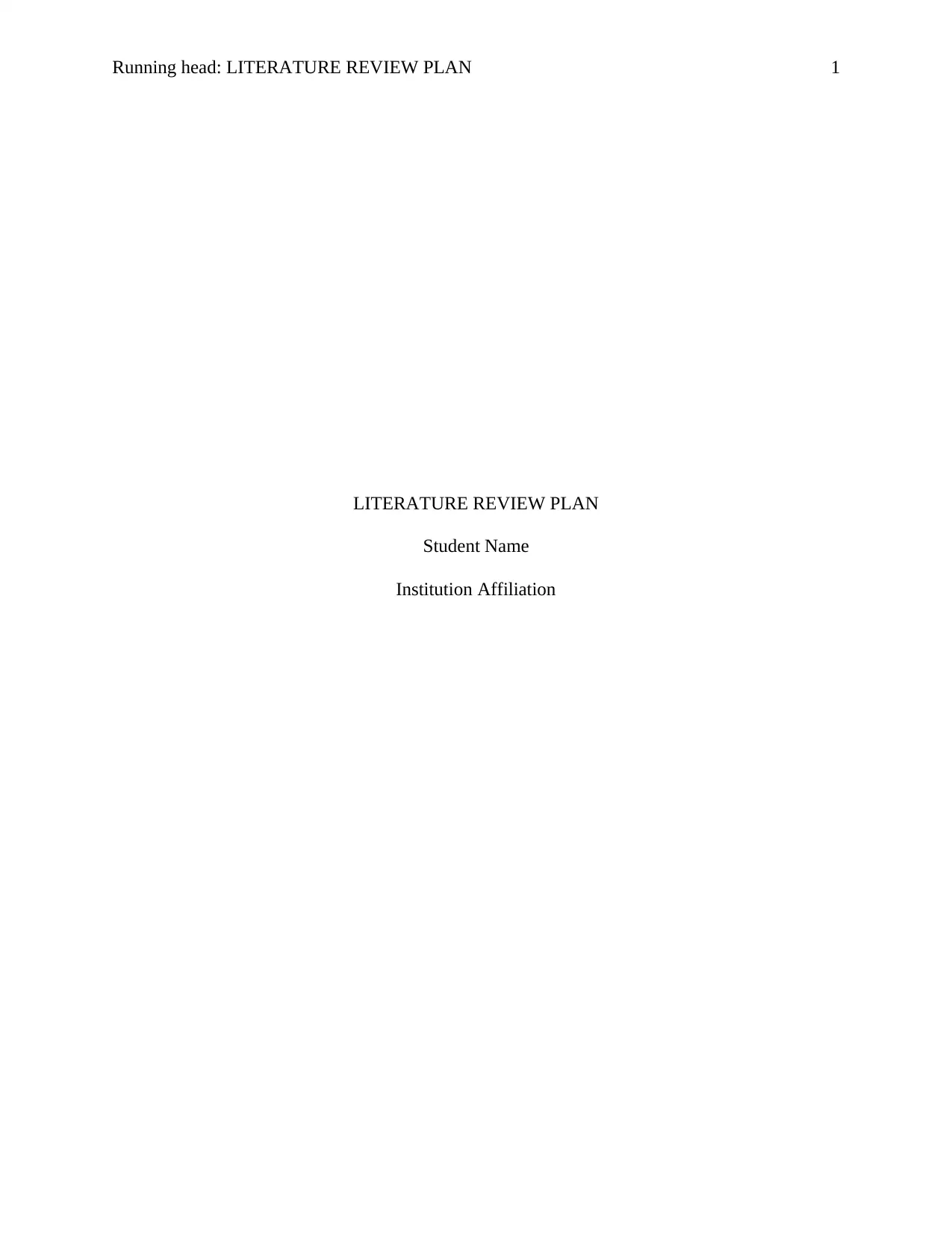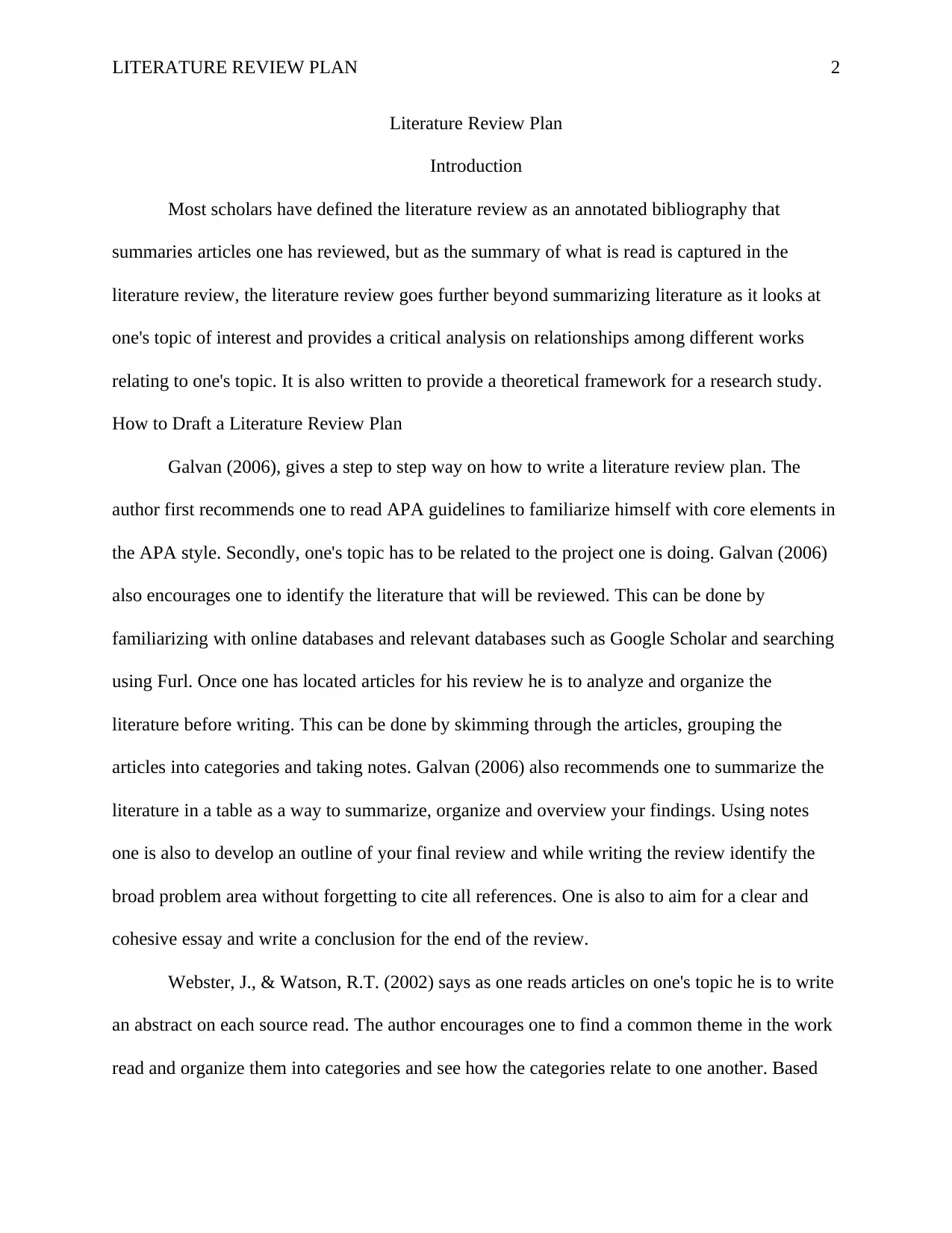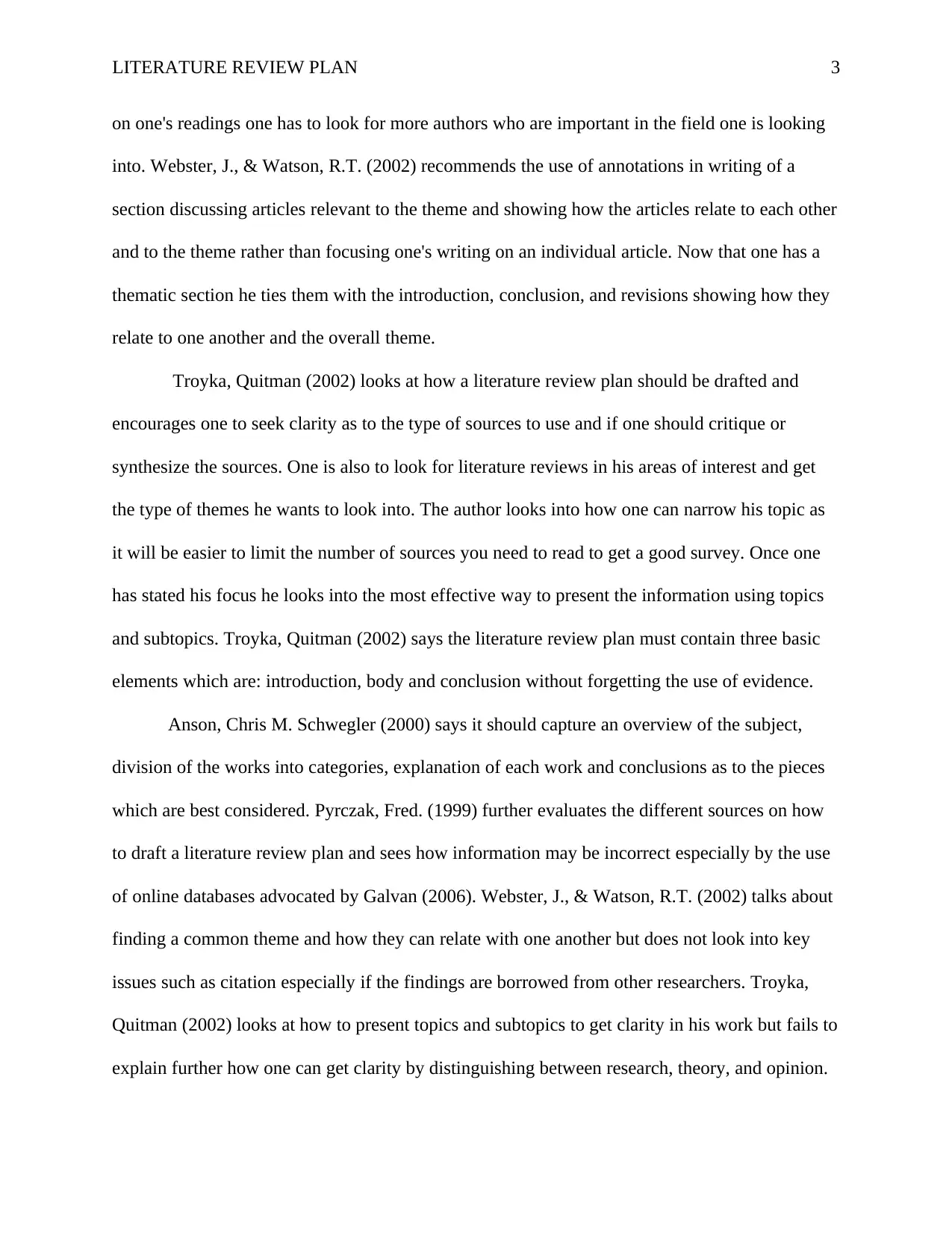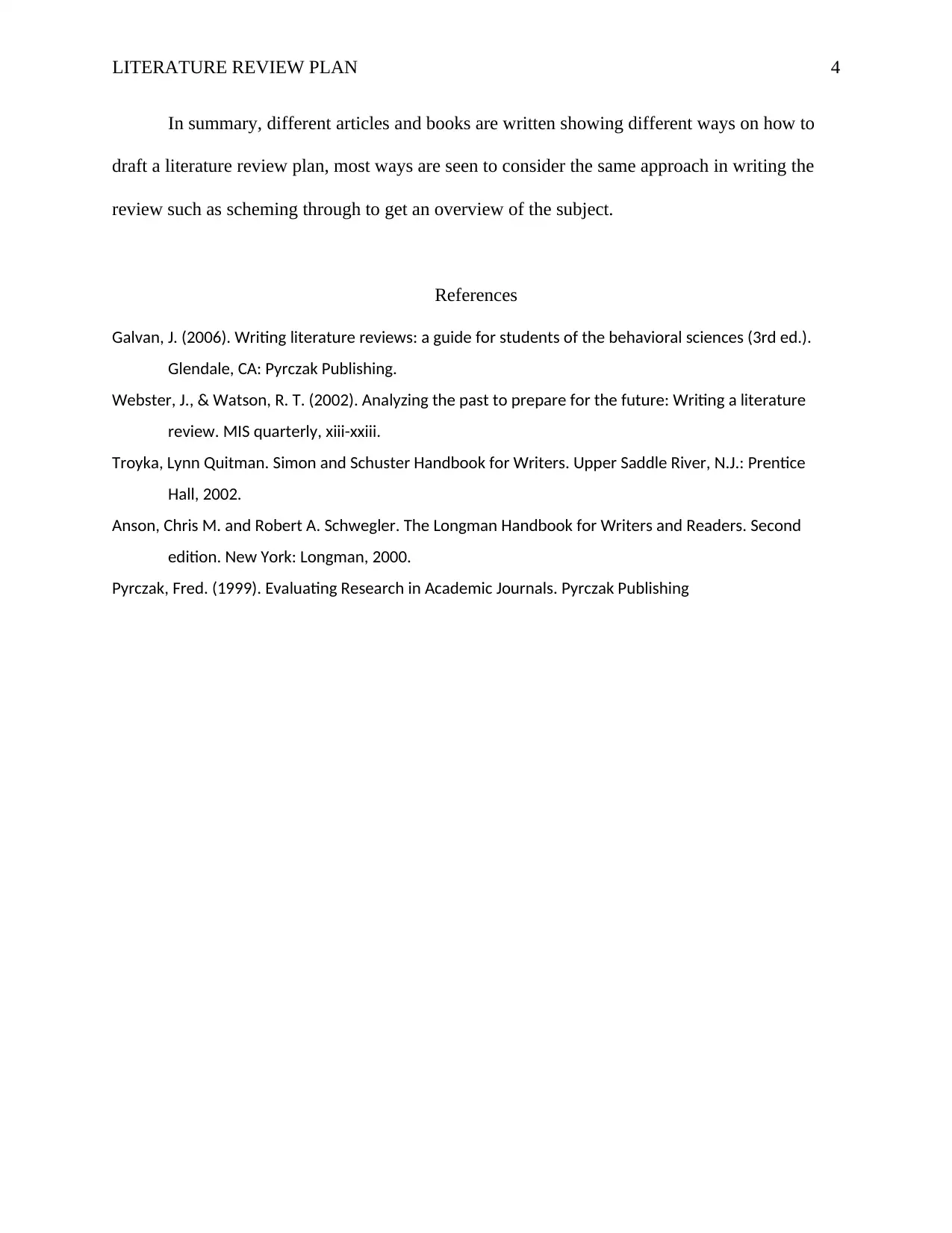Literature Review Plan: Drafting, Guidelines, and Frameworks Overview
VerifiedAdded on 2023/06/04
|4
|981
|435
Literature Review
AI Summary
This literature review plan provides a comprehensive overview of the process of writing a literature review, drawing on the works of various authors such as Galvan, Webster & Watson, Troyka & Quitman, Anson & Schwegler, and Pyrczak. The plan outlines the essential steps, including understanding APA guidelines, relating the topic to the project, identifying and analyzing relevant literature, organizing findings, developing an outline, and writing a cohesive essay. The review emphasizes the importance of thematic analysis, critical evaluation, and proper citation. Different approaches to drafting a literature review plan are discussed, highlighting key elements like introduction, body, and conclusion, as well as the effective presentation of information through topics and subtopics. The document also addresses potential pitfalls, such as incorrect information from online databases and the need for clarity in distinguishing between research, theory, and opinion. Ultimately, the review synthesizes various perspectives to offer a practical guide for students in the behavioral sciences and related fields.
1 out of 4






![[object Object]](/_next/static/media/star-bottom.7253800d.svg)